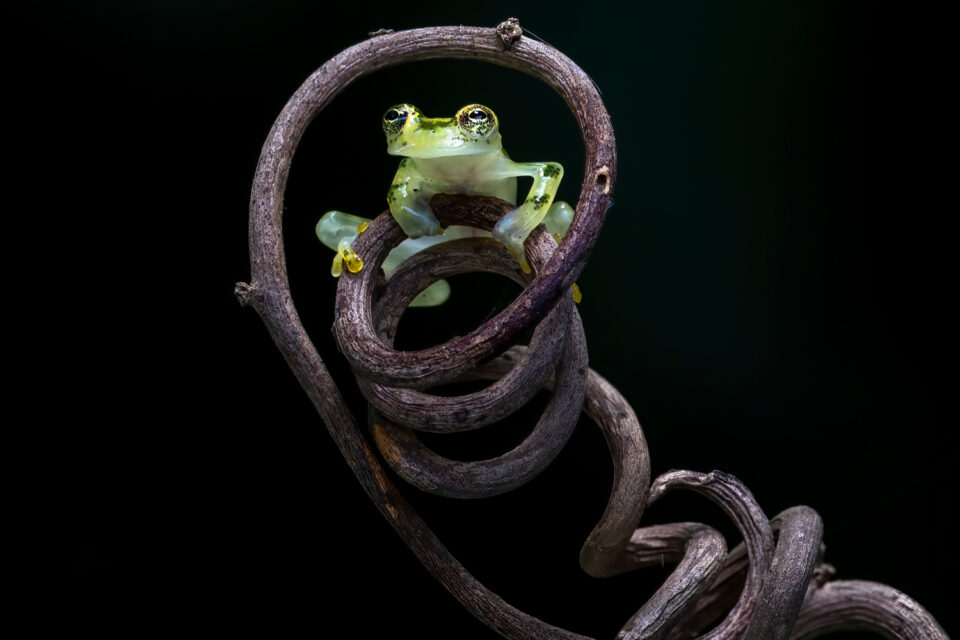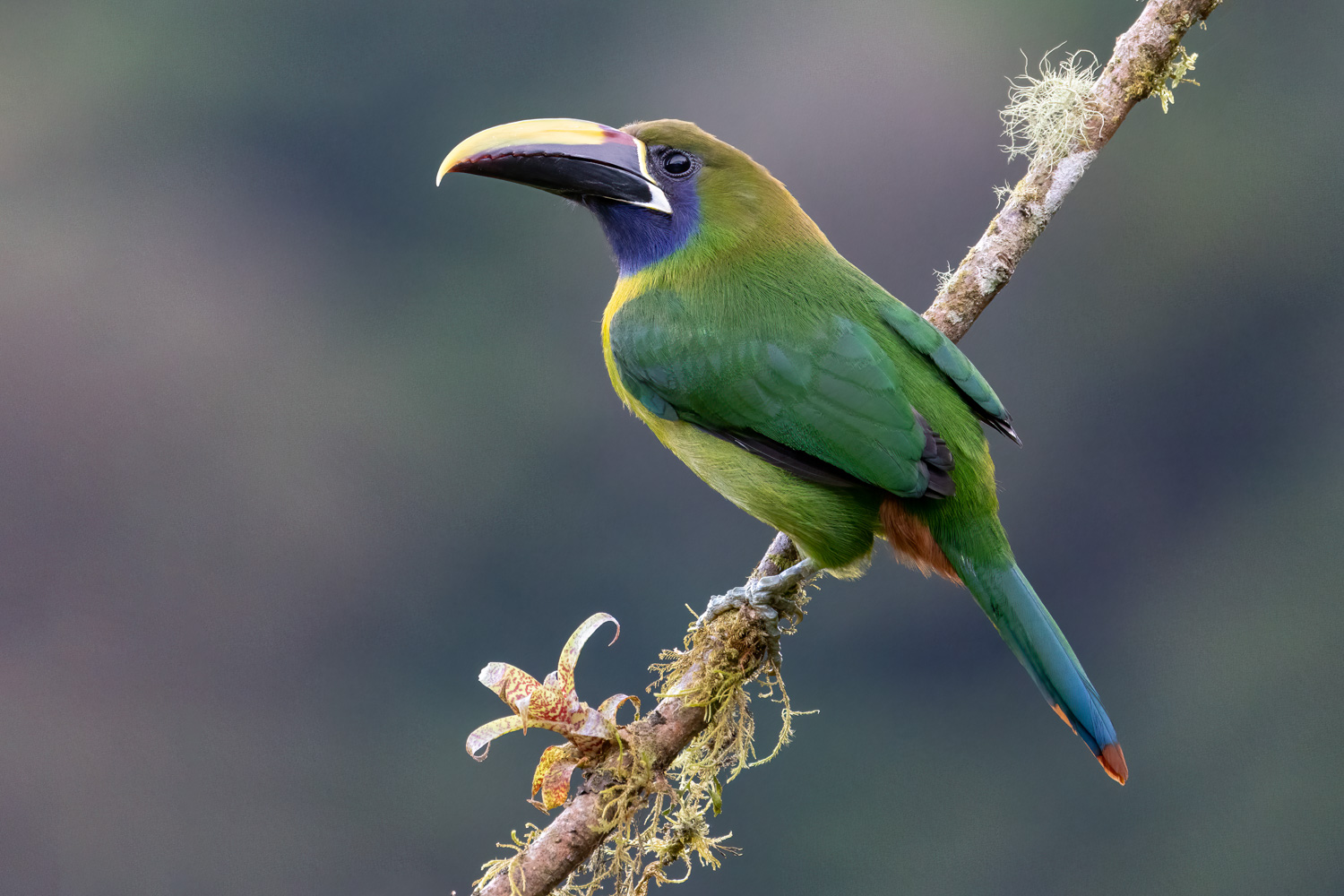Just slightly smaller than the state of West Virginia, Costa Rica falls into the category of being a small country. So, why is there such a huge variety of wildlife here? What quickly becomes apparent once on the ground, is the geographic diversity of this tropical country. In its 19,700 square mile footprint, the elevation quickly rises from sea level to over 12,500 feet and then down again. Some of the mountains are tectonic in origin while others are the result of volcanic activity. From the lowlands, through the foothills and into the highlands, 12 different ecosystems exist within Costa Rica’s borders. And that is the secret to Costa Rica’s biodiversity.
The rainforests of the lowlands, the more moderate foothills and the cloud forests of the highlands are hugely different environments. And each has its own groups of animals that have adapted to life within a very narrow range of elevation. This is what makes our Costa Rica tours so incredible. We spend time at all three elevations so we can observe and photograph the unique slice of nature found in each.
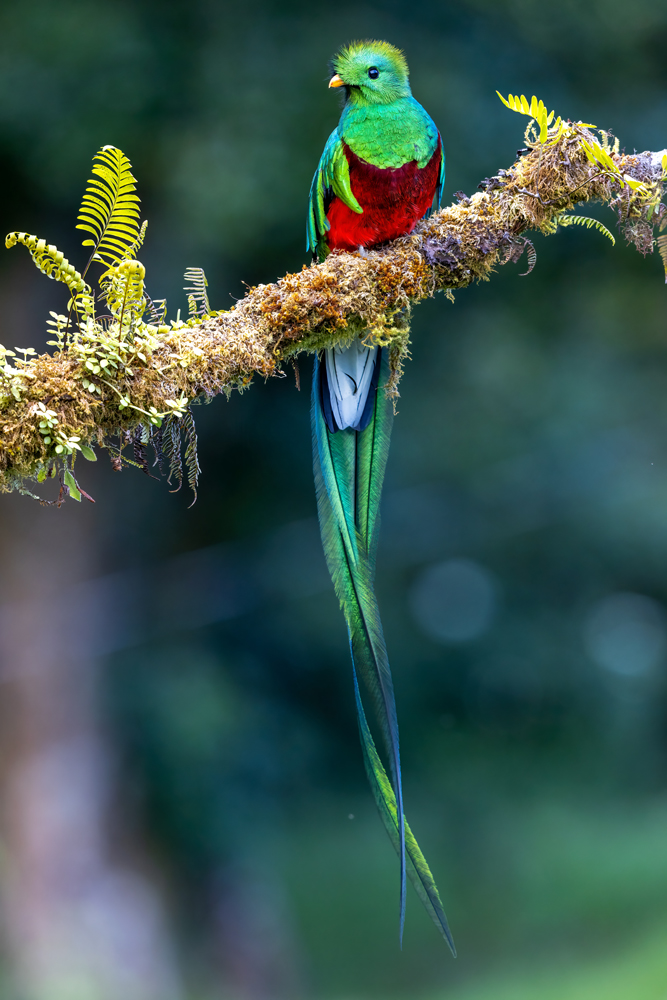
The lowlands are home to the many tropical birds that we are familiar with such as toucans, macaws, and parrots. But this is just the beginning. It is also the area that harbors the largest variety of colorful frogs and interesting snakes. We had great opportunities to photograph three different toucans here including the keel-billed, yellow-throated, and collared araçaris. Montezuma oropendolas were plentiful as were great curassows, two different orioles, three different honeycreepers and at least a half dozen different colorful tanagers. All came repeatedly to within easy photographic range innumerable times. Three different woodpeckers made themselves easy targets for our cameras, including the black-cheeked, pale-billed (both nesting on site at our lodges) and the unique chestnut-colored woodpecker. The bird activity was never-ending. On one lowland morning, we shot from specially constructed photo blinds as numerous king vultures and black vultures came to feed. The king vulture is spectacular. It is twice the size of the smaller black vultures and sports beautiful white and black feathers and a colorful, ornate head and beak. We captured spectacular shots of king vultures with their 6-foot wingspan as they flew in and landed on a nearby tree stump.
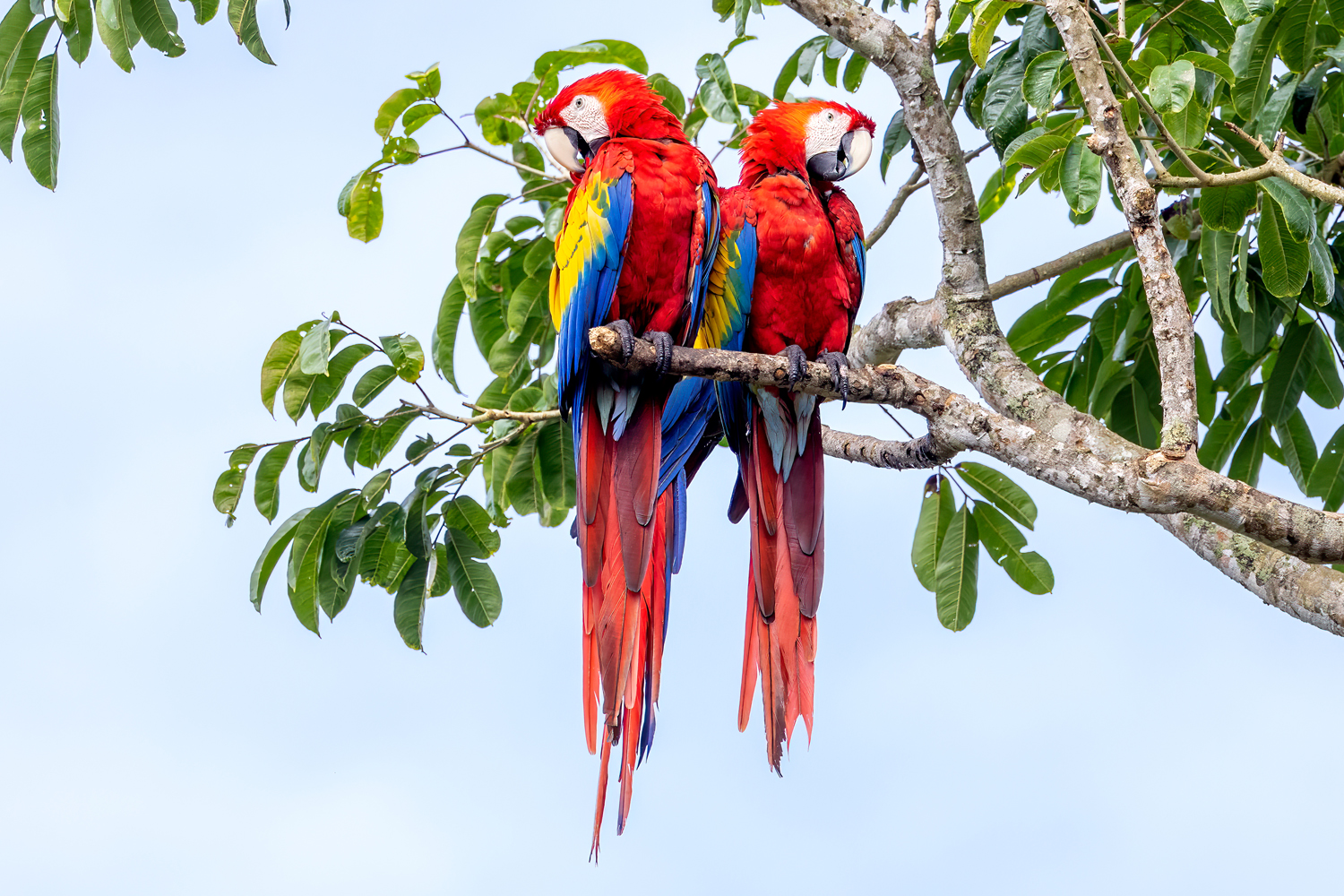
On another lowland morning we drove to an open field to photograph two species of macaw in flight. There were more macaws this year than I had ever seen. At least 50 scarlet macaws and great green macaws filled the trees as we arrived. For over an hour we had repeated opportunities to capture these large parrots in flight, which is always exciting.
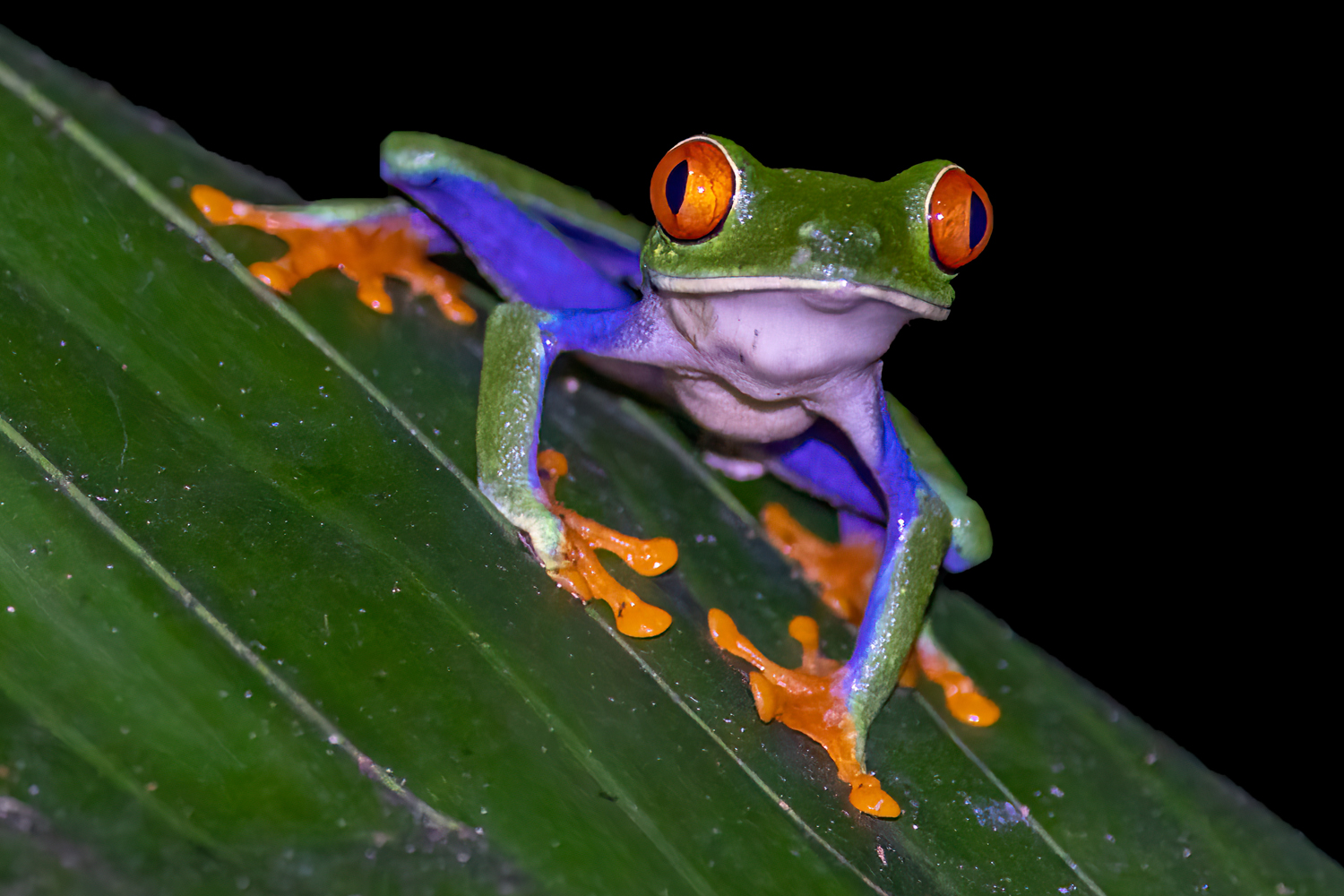
This tour is timed for the beginning of the dry season. The main rainy season is over, but it can still rain briefly at any time. And that’s what I am always counting on. When it rains while photographing birds, slowing the shutter speed results in wonderful backgrounds of streaking raindrops. So, this is always welcome. Heavy rain in the afternoon always energizes the frogs in the evening. We take full advantage of this while in the lowlands and photograph the iconic, red-eyed tree frogs after dark. As dusk falls, the male frogs descend from high in the trees over a small pond and begin calling to attract females. A short time later, the larger females also descend to select their mates. We photograph these incredible frogs using special lighting techniques that don’t disturb the frogs and capture their natural activities. The frog activity went on for hours. Everyone easily came away with many outstanding images.
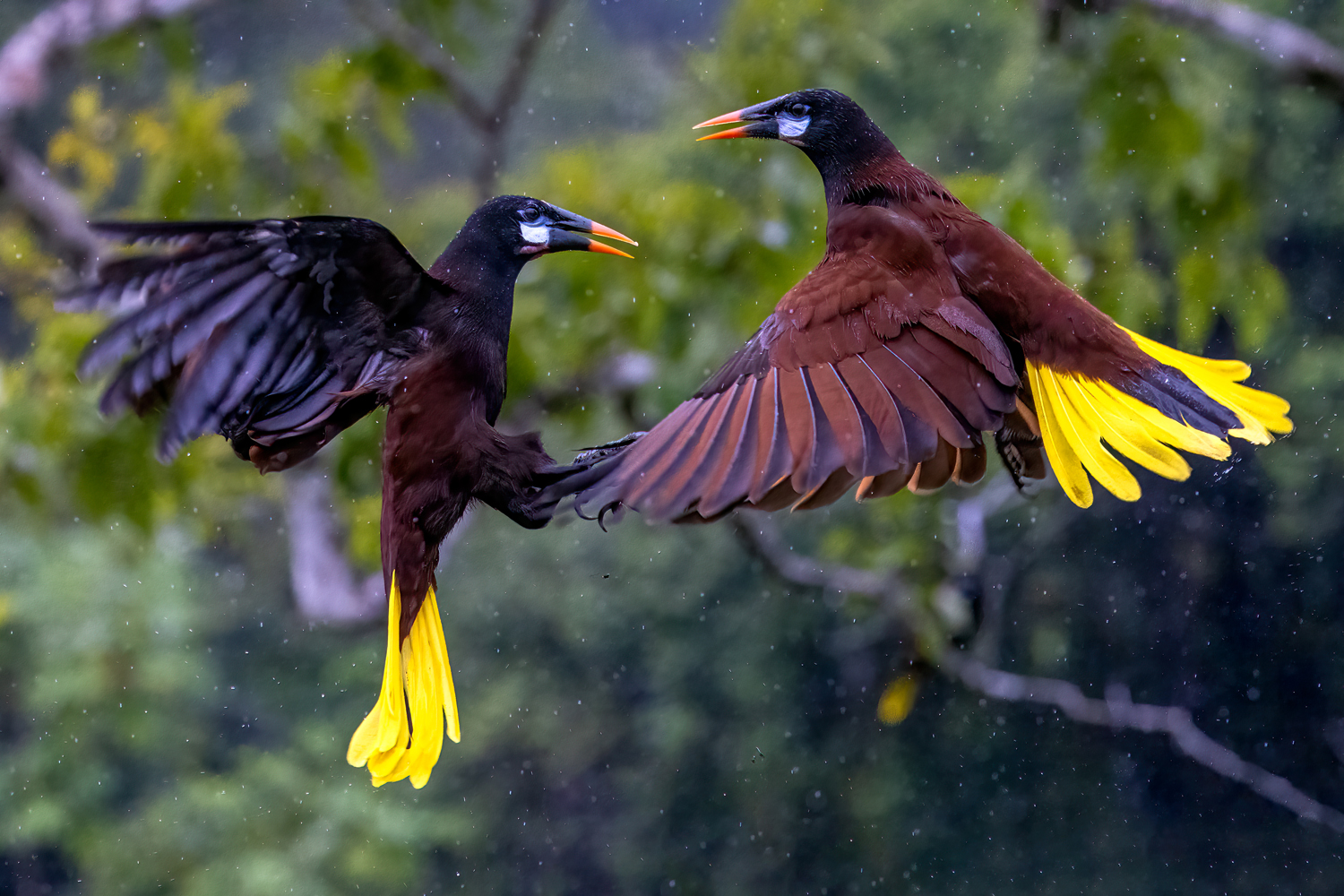
Our lodge in the foothills is at an elevation of 3000 ft. It is cooler and drier here than in the wetlands and we see a variety of new birds. Lesson’s motmot, brown jays and a variety of hummingbirds are here. We use our special high-speed multi-flash setups to freeze the fast-moving wings of hummingbirds as they come to our flowers to feed. White-necked jacobins and green-breasted mangos were the two most common hummingbirds we photographed. As with most hummingbirds, territorial squabbles are frequent. The high-speed flash allows us to capture these lightning-fast interactions between the birds. We were very fortunate to be visited by a tayra as it scavenged for food near our fruit feeders. A tayra is a large omnivore in the weasel family and always a surprise when it comes out in the open and can be photographed.
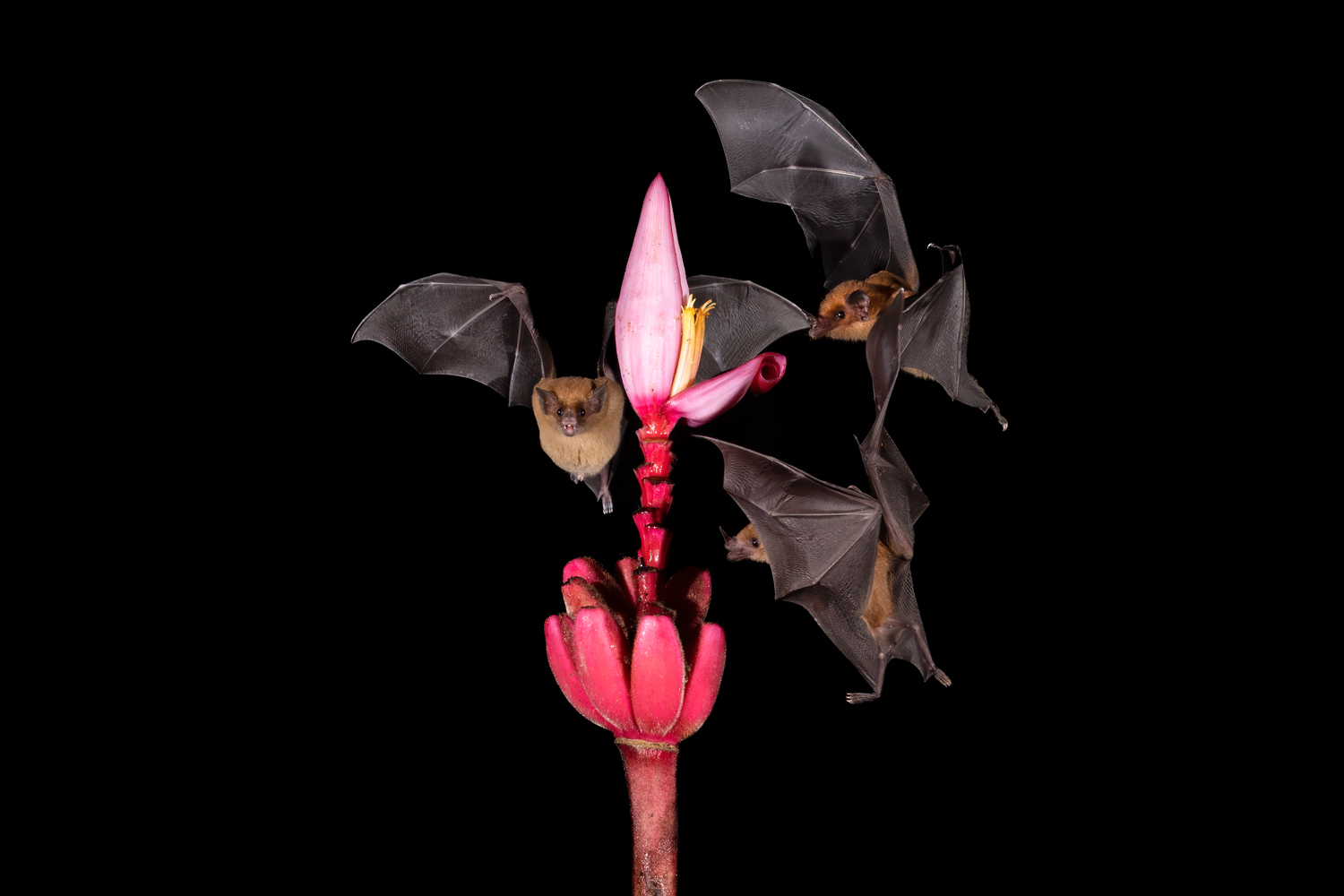
Another unique opportunity that we have in the foothills is to photograph bats at night as they come to our flowers to feed. After dark, everyone is led up the mountain trail for about 10 minutes to where I have all the equipment ready. Once the group is set up, we wait. It didn’t take long before the first bat triggered our flashes. Then another and another. You could hear the flutter of the bats’ wings as they flew past our heads in the inky blackness to reach the flower. Soon, the bats were flying past us every few seconds. They flew in individually and in small groups. We captured several nice images containing multiple bats in the frame. The shooting was so good, and everyone was so excited after seeing what they captured that I set it up to shoot bats again the next night. The action was equally exciting even though our shooting was cut a bit short by a passing rainstorm. Photographing bats is a unique opportunity on our tours and always a favorite highlight of the trip.
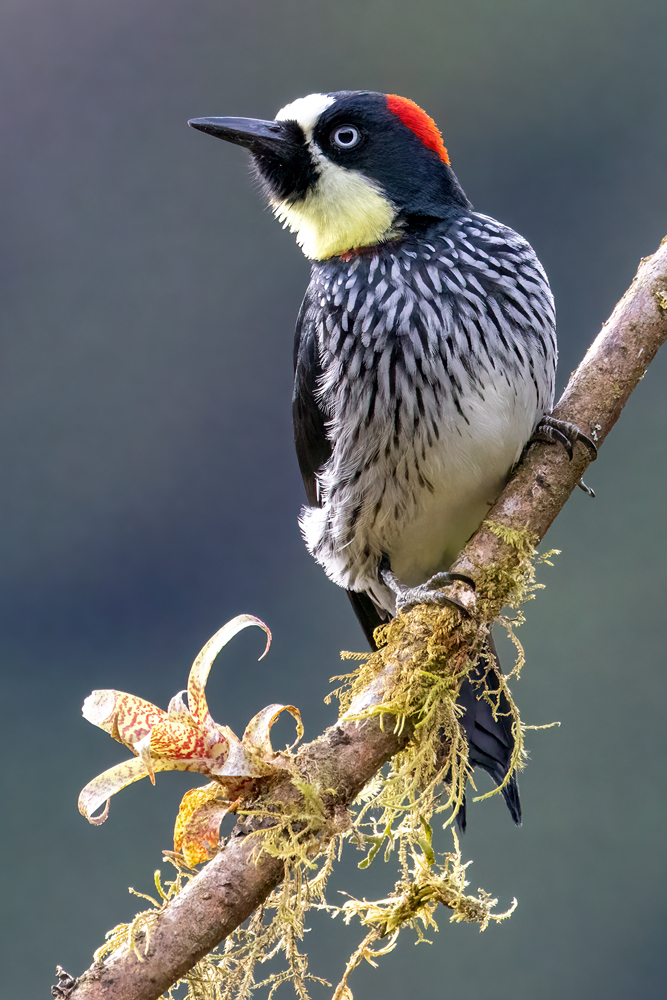
We head to the highlands and an elevation of 9000 feet into the cloud forest. At this elevation, the birds change again. While a few of the tanagers are found at all elevations we visited, other birds we only see here. The northern emerald toucanet, long-tailed silky flycatcher, acorn woodpecker and flame-breasted tanager are among those we see only in the highlands. There are also very different hummingbirds than at lower elevations such as the Talamancan hummingbird, lesser violet-eared hummingbird, white-throated mountain gem and volcano hummingbird. The most spectacular hummingbird we see here is the fiery-throated hummingbird and it is easy to see how it got its name. Unlike in the foothills, we do not use our high-speed flash setups to photograph hummingbirds here. But we still capture stop-action hummingbird images by using higher ISO settings and faster shutter speeds. The results were spectacular.
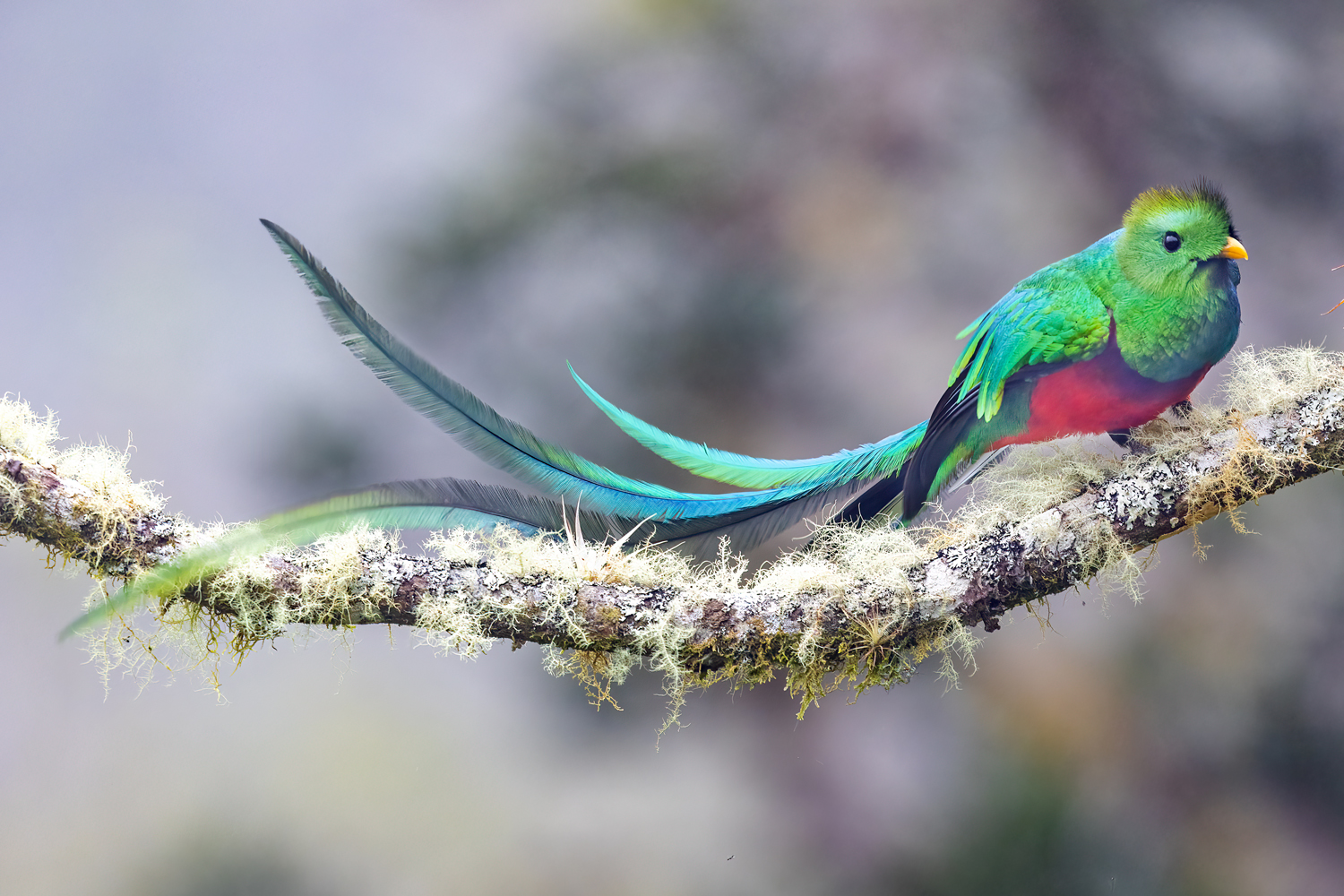
Hummingbirds aren’t the only spectacular subject here. We’ve come to the highlands with one major subject in mind—the resplendent quetzal. As if the brilliant red and green plumage of the resplendent quetzal wasn’t enough reason to photograph this bird, the males sport two covert feathers that often extend more than 3 feet beyond its tail. We have the very best local guides in Costa Rica when it comes to locating and getting us to this magnificent bird. Whether in the spring when the quetzals are nesting or during the green season in December when they are heavily feeding and courting, our guides always put us in the heart of the action. And they did so again. We were brought to the location of one of their favorite foods, a mini avocado about the size of a large olive. The tree was surrounded by bromeliad and moss-covered natural perches where the birds would land after spending time in the tree. One afternoon, we had as many as 5 different males and 2 females in the area at the same time. We had exceptional photo ops and even had frequent opportunities to capture these magnificent birds in flight.
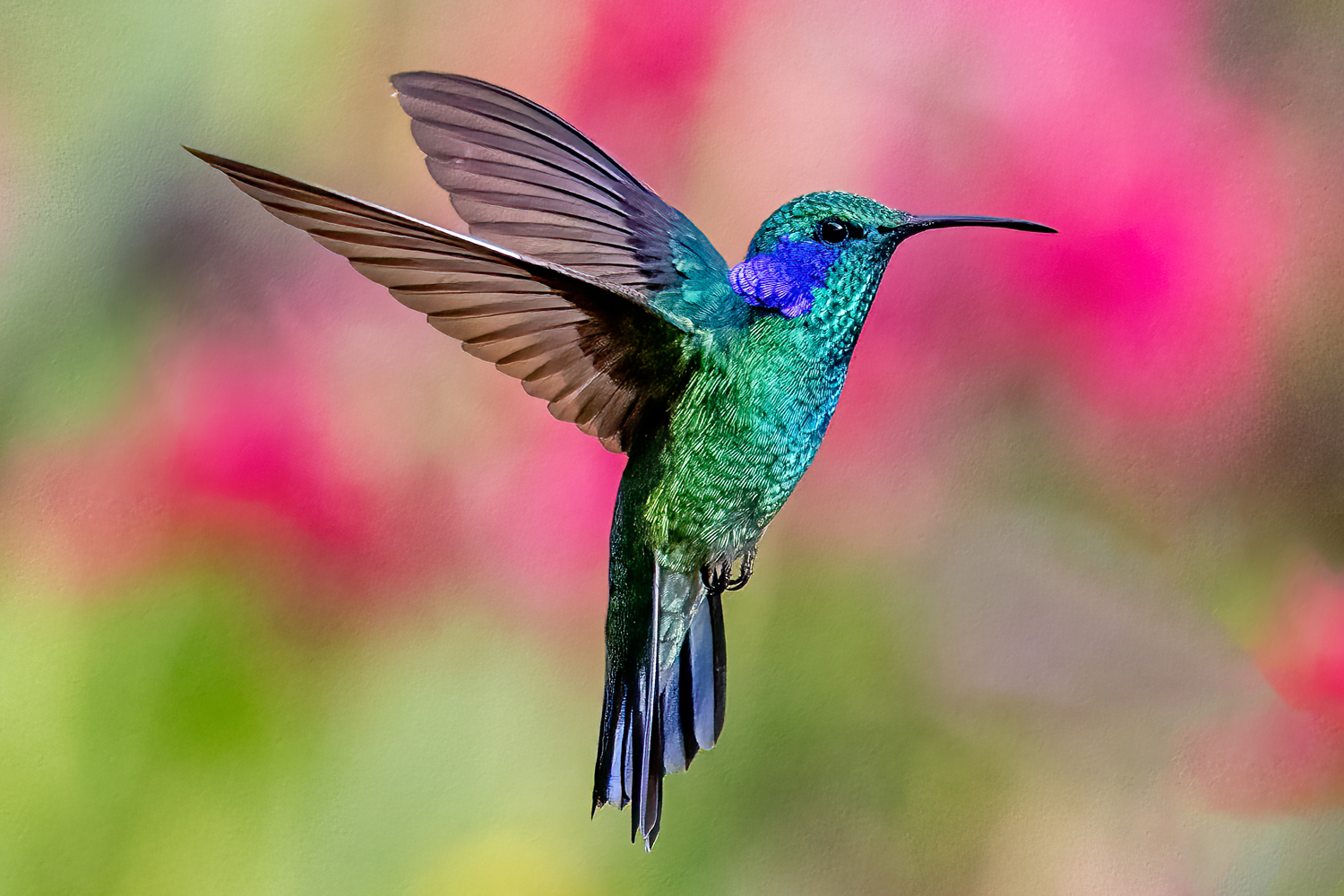
Our Costa Rica tours are always high-volume, multi-subject photo experiences. And this Green Season was no exception. Everyone came away with truly awesome images of all target species from quetzals to hummingbirds, toucans to king vultures, nocturnal frogs to flying bats and many, many more! Now well-rested after the holidays, my bags are already packed for another exciting Costa Rica tour in March!
